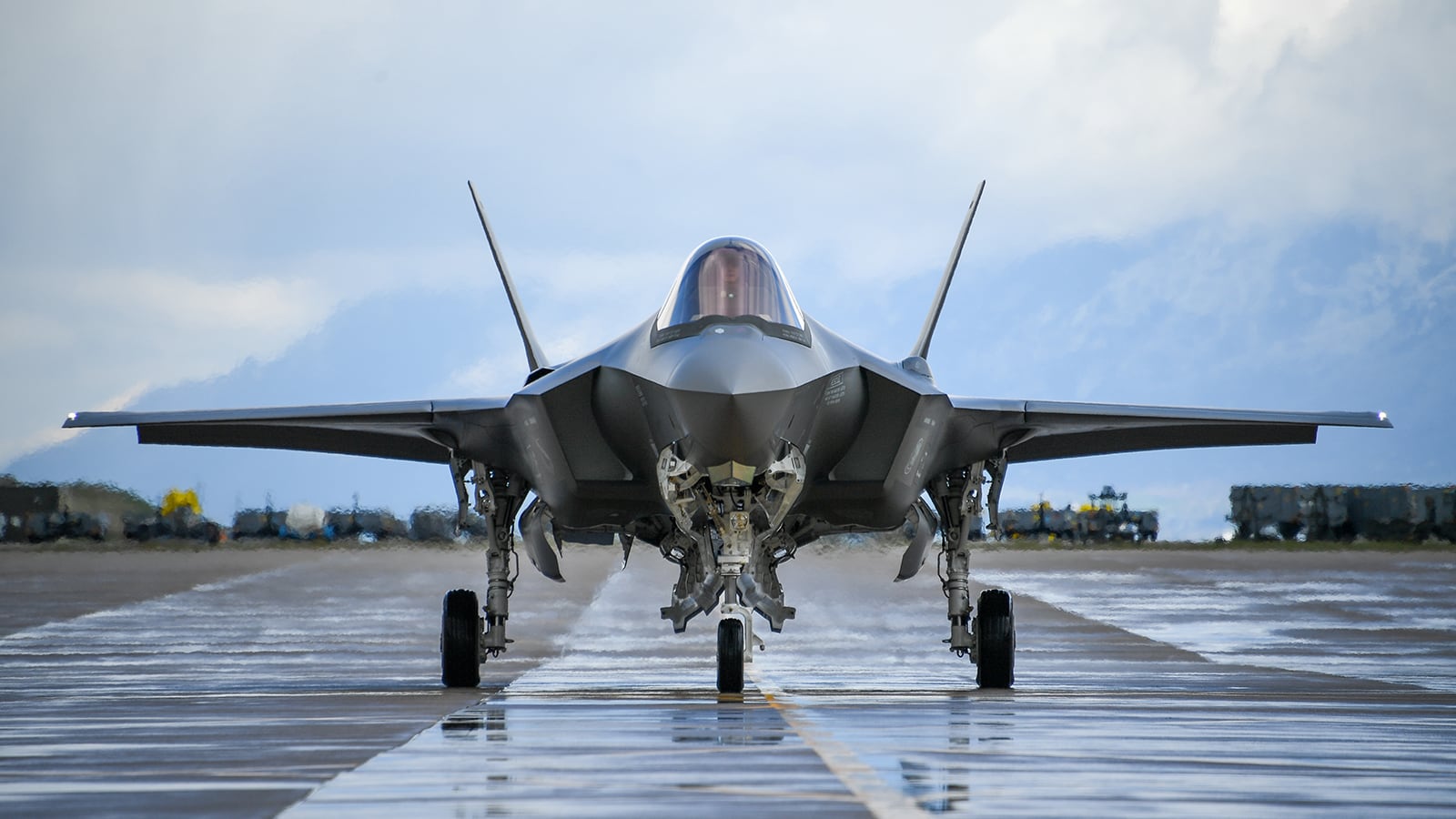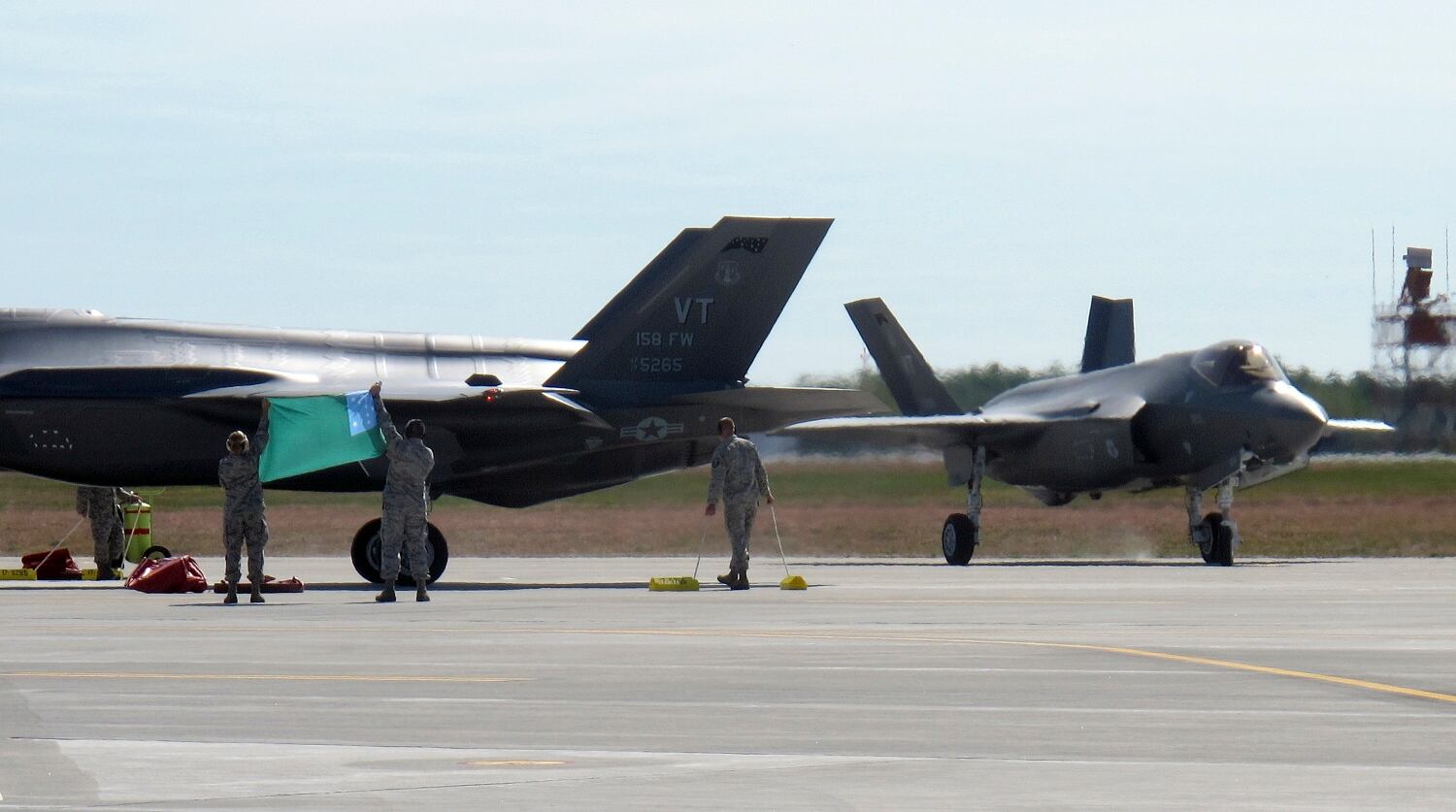MADISON, Wis. — With unanswered questions and increasingly vocal opposition from some residents, Madison’s City Council has asked the Air Force to potentially reconsider Truax Field as a preferred site for a squadron of F-35 fighters, while 15 Dane County supervisors have signed a letter opposing the jets.
But despite assurances that no decision has been made, history suggests the Pentagon is unlikely to reverse its position even after gathering public input on a 1,099-page environmental impact statement published in August.
F-35s recently began arriving in Burlington, Vermont, despite years of opposition by residents and local governments.
RELATED

The Air Force, which has identified Madison and Montgomery, Alabama, as the preferred sites for two more squadrons of the new $90 million jets, has never reversed course on an initial basing decision, said Zach Brandon, president of the Greater Madison Chamber of Commerce and an ardent supporter of the project.
But Brandon said there were detailed studies of environmental issues such as noise even before the military chose its preferred sites.
"They don't just throw a dart at a map and pick a place," he said. "They have an extensive review process."
Air Force spokeswoman Ann Stefanek, who has been involved with basing decisions since 2011, said the final choice could change based on the outcome of an environmental study, but she could not recall that happening in any of the hundreds of decisions — both personnel and equipment — she’s familiar with.
“I’m not aware of any that had any issues,” Stefanek said.

A final decision by the secretary of the Air Force is expected in February, 30 days after the final environmental impact study is released. Nov. 1 is the deadline for comments on the draft study.
State Rep. Chris Taylor, who represents neighborhoods near the airport and has emerged as a leading voice of the opposition, said there are too many unknowns for the Air Force to move ahead with plans to base the new jets in the state’s capital city.
Taylor, who would like to see the Air Force allow more time to study the impact, said she hopes the public comment process is more than a formality. She thinks the community should have a say in whether the jets come here, and if they do how to mitigate the environmental impacts.
“It’s not supposed to be a done deal,” she said. “I’m still not a cynic about government . and the ability of people to influence government. I still believe people have a powerful say.”
While Brandon said the Air Force has considered most of the concerns — and is unlikely to be swayed by those who oppose the jets based on an opposition to warfare and the “military industrial complex” — he said federal representatives have raised valid questions about the assumptions used in the sound modeling and ways to mitigate noise.
“The local discussion does matter,” Brandon said.
If Madison is selected, Truax could begin receiving F-35s in 2023, though planning is already underway for $34 million in new construction to prepare for them.
The Guard says it needs a 19,000-square-foot building to house four F-35 flight simulators, which would be used to train pilots on the new aircraft. In addition, the unit needs new shelters to house the 115th Fighter Wing’s four existing F-16s, which will support the unit’s national defense mission while the existing shelter will house the new F-35s.
The U.S. Air Force is considering plans to station a squadron of F-35 fighter jets at Truax Field in Madison, two of which can be seen in the hangar above. If approved, the Air National Guard has plans to begin construction next fall on new hangars and a building to house four flight simulators.
Capt. Leslie Westmont, spokeswoman for the fighter wing, said funding for those projects would not be available unless the base receives final approval for the F-35s.
Construction would begin next fall, but city staff have suggested the National Guard can’t “safely and legally” start construction without a complete site investigation to determine the extent and nature of contamination from chemicals known as PFAS that are associated with firefighting foam long used in training and have triggered the shutdown of a city well near the airport.
In the Air Force’s first round of basing decisions, the Vermont Air National Guard was selected as the first Guard unit to receive F-35s, in spite of resolutions from three host communities — Burlington, South Burlington and Winooski — asking for reconsideration.
The first two F-35s arrived in Burlington earlier this month, with 18 more scheduled for delivery in the weeks to come.
Their arrival came just two weeks after a resident there asked the Air Force to conduct a supplemental environmental study based on revelations that the original study underestimated the use of afterburners, which dramatically increase the noise when the jets take off.
In several environmental studies, including Madison’s, the National Guard says it will use afterburners on fewer than 5 percent of takeoffs, compared to about 60 percent with the current F-16s.
But Roseanne Greco, a retired Air Force colonel and former Burlington city council member who has opposed the F-35s, received a leaked email from an environmental compliance officer at the Davis-Monthan base in Tucson who said Air Force lawyers want noise studies based on higher percentages of afterburner use.
“They know this has been a problem for years and years and years,” Greco said.
RELATED

Greco said even if afterburners are used 10 percent of the time it could significantly change the number of homes exposed to intolerable noise levels.
“The Air Force has to tell us,” she said. “They’re required under NEPA (the National Environmental Policy Act) to tell people when there’s a chance of a significant impact.”
Greco spoke by phone from her home about five miles from the Burlington airport, where that city’s first F-35s could be heard in the background.
“It looks like they’re doing a flyover,” she said. “That’s nice.”




